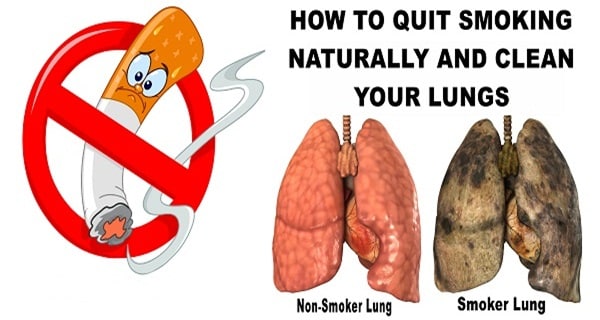
Juuls: Is It Bad For You? The Shocking Dangers You Should Know About It
Table of Contents
What is Juuling? Is it safer than smoking?
A new type of e-cigarette called “juul” has become so popular that it is now about 68% of the $2 billion e-cigarette market. The “juul” is especially popular among children and young adults due to its sleek and discreet design, its ability to be recharged on a laptop or wall charger within one hour, and its liquid-filled cartridges that come in popular flavors like cool mint, creme brulee, and fruit medley.

As a result, “juuling” is now very common at teenage hangouts and even at school. Medical professionals are very concerned because juul delivers higher concentrations of nicotine than other e-cigarettes. Not only is nicotine highly addictive, but it is also toxic to fetuses and is known to impair brain and lung development if used during adolescence.[1] It is not replacing cigarette smoking but rather encouraging it: A 2017 study found that non-smoking adults were four times more likely to start smoking traditional cigarettes after only 18 months of vaping, which includes “juuling.”[7]
How does the Juul Work?
According to Juul Labs, the company that owns and sells the juul e-cigarette, the device uses an internal, regulated heating mechanism that creates an easily inhaled aerosol. This mechanism prevents the batteries in the juul from overheating and exploding, which has been a problem for other brands of e-cigarettes. Juul is easy to use because there are no settings to adjust or control.
All that is required is a non-refillable juul pod cartridge that clicks into the top of the juul and contains a nicotine e-liquid formula. This e-liquid is heated and converted into vapors that are inhaled by the user. One of the reasons it is so popular among youth is that it is so easy to use – no prior experience or knowledge required. All they have to do to intake nicotine is to put a juul to their mouth and inhale.
What makes Juuls different from other e-cigarettes?
The increased harm of juuls compared to other e-cigarettes is due to the concentration and contents of its juul pods. The e-liquid is 5% nicotine by volume, which is more than twice the concentration of nicotine in similar devices like the Blu e-cig cartridge (2.4% nicotine). This increases the risk of addiction; in fact, a study done by the UK’s Royal College of Psychiatrists showed that nicotine is about as addictive as cocaine and even more addictive than alcohol and barbiturates (anti-anxiety drugs).[2]
The impact on the developing brain is also of great concern. Brain imaging studies of adolescents who began smoking at a young age had markedly reduced activity in the prefrontal cortex of the brain, an area critical for a person’s cognitive behavior and decision making, leading to increased sensitivity to other drugs and greater impulsivity.[3]
The amount of nicotine in one juul pod is equivalent to a pack of cigarettes. Since teens often use multiple pods in one sitting, they can unknowingly become exposed to unsafe levels of nicotine that can have immediate and long-term health consequences. In 2016, the Food and Drug Administration (FDA) was given the authority to regulate e-cigarettes such as juul but has allowed e-cigarette manufacturers to postpone their applications for FDA approval until August 2022. Meanwhile, these harmful devices can remain on the market and continue influencing adolescents to become addicted to nicotine.[8]
Another reason why the juul is a unique threat to teens is its patented formula of nicotine. While other brands use a chemically modified form called “freebase nicotine,” juuls use “nicotine salts” that more closely resemble the natural structure of nicotine found in tobacco leaves. This makes the nicotine more readily absorbed into the bloodstream and makes the vapor less harsh so that it is easier to inhale more nicotine for longer periods of time.
In addition to this patented formula, juul pods contain a greater amount of benzoic acid, 44.8 mg/mL, compared to other e-cigarette brands, which are in the range of 0.2 to 2 mg/mL. According to the Center for Disease Control and Prevention (CDC), benzoic acid is known to cause coughs, sore throat, abdominal pain, nausea, and vomiting if exposure is constant, which is the case when using a juul.[4] This is due to how juuls utilize the properties of benzoic acid to increase the potency of the nicotine salts in its e-liquid.
What makes Juuls popular among children and teens?
Since juuls are small, discreet, and closely resemble a USB drive, they can be easily hidden and used in a wide variety of settings, such as the classroom. Teachers and school administrators across the nation are finding students juuling when their backs are turned: Students can take a hit, blow the small, odorless puff of smoke into their jacket or backpack, and continue their school work in a matter of seconds. Compared to other forms of teenage rebellion, juuling is especially dangerous as middle and high school students are unknowingly becoming addicted to nicotine at an alarming rate.
Because a person must be at least 21 to purchase a juul or juul pod, a juul black market is the source for many teens, through eBay or Craigslist. In response, the FDA contacted eBay to raise concerns about listings of juul products on its website, resulting in the removal of the listings and the creation of measures to prevent new listings from being posted.[5]
In April 2018, FDA Commissioner Scott Gottlieb announced that he was creating a Youth Tobacco Prevention Plan aimed at stopping the dramatic rise in the use of e-cigarette and tobacco products among youth. The FDA specifically asked Juul Labs for documents related to product marketing and research on the health, toxicological, behavioral, or physiological effects of their products in order to understand why youth are so attracted to them.[6]
Additionally, Juul Labs is currently facing lawsuits in several states claiming that its products were deceptively marketed to youth under the legal smoking age. The FDA now plans to create enforcement policies for e-cigarette manufacturers, including juul, that are marketing their products to children and teenagers.
Unfortunately, there is no long-term safety data about e-cigarettes. What information we do have suggests that e-cigarettes have a complex mix of potential harms and benefits.
E-cigarettes: Less deadly than regular cigarettes
First, the good news: e-cigarettes are almost certainly less lethal than conventional cigarettes. Cigarette smoking is a uniquely dangerous addiction. In fact, cigarettes might be the only consumer product that kills when used as directed. Cigarettes are the number one cause of preventable death in the United States, killing 480,000 people every year.
That’s more deaths than HIV, heroin, methamphetamine, cocaine, alcohol, motor vehicle accidents, and firearms combined. Smoking increases the risk of stroke, heart attack, COPD, asthma, diabetes, and most cancers. The free radicals in cigarette smoke physically age the human body. On average, smoking reduces your lifespan by at least 10 years. Tobacco could not possibly be approved for sale in the United States today if it was a new product coming on the market.
A burning cigarette gives off noxious gases, such as carbon monoxide and hydrogen cyanide. Cigarette smoke also contains an ultrafine suspension of gummy residue, known as tar. Most of the carcinogens in cigarette smoke are found in the tar. The major benefit of e-cigarettes, compared to regular cigarettes, is that they do not produce the tar or the toxic gases found in cigarette smoke.
An e-cigarette contains a cartridge of fluid, popularly known as e-liquid. E-liquid is made up of nicotine and flavorings dissolved in propylene glycol and glycerol. The e-liquid is superheated by a battery-powered vaporizer, converting it into a mist which is inhaled, or “vaped.”
Studies about e-cigarettes and smoking behavior show conflicting results. E-cigarettes were mildly helpful in kicking the habit in one clinical trial. In other studies, e-cigarette use did not increase quit rates or was even associated with a higher risk of continuing to smoke. A recent review concluded that real-world use of e-cigarettes is associated with lower quit rates.
The negative aspect of e-cigarettes
Now the bad news. Nicotine in e-cigarettes may have several negative health effects. Chronic nicotine exposure may lead to insulin resistance and type 2 diabetes, although this risk may be offset by the well-known appetite suppressant effects of nicotine. Inhaled nicotine increases heart rate and blood pressure.
Nicotine is highly addictive in its own right, and it may lead to changes in the brain that increase the risk of addiction to other drugs, especially in young people. Nicotine may also impair prefrontal brain development in adolescents, leading to attention deficit disorder and poor impulse control. These potential harms of nicotine are particularly worrisome in view of soaring rates of e-cigarette use in U.S. teenagers.
The nicotine in e-liquid may also be a household hazard. Many e-liquids have candy and fruit flavoring and packaging that makes them attractive to children. Cases of nicotine poisoning from e-liquid have skyrocketed, with accidental ingestions of e-liquid by kids rising by 1,500% in the past three years.
Flavored e-cigarettes may pose another health threat. They often contain a chemical compound called diacetyl, which is associated with a rare lung disease called bronchiolitis obliterans that causes permanent damage to the bronchioles (the tiniest airways in the lungs).
Propylene glycol and glycerol, the major components of e-liquids, are not thought to be dangerous on their own. However, they may decompose when heated by the vaporizer, and be transformed into toxic compounds such as formaldehyde. This is more common with newer vaporizers that use high wattages.
What you need to be aware of…the facts
- For people who are currently addicted to cigarettes, e-cigarettes provide a less dangerous nicotine source, without exposure to tar or most of the poisonous gases in cigarette smoke. However, it is unclear whether e-cigarettes actually help significant numbers of people to quit smoking.
- People who do not already smoke should avoid e-cigarettes. E-liquids contain nicotine, which increases the risk of high blood pressure and diabetes, as well as flavoring agents that may cause a chronic lung disease called bronchiolitis obliterans. High-wattage vaporizers may also generate significant amounts of formaldehyde and other toxins.
- E-cigarette use is soaring in young people. This is of particular concern, as exposure of the developing brain to nicotine may impair brain development and predispose teenagers to addiction to other drugs.
Conclusion
The popularity of juuls among adolescents exposes them to large amounts of nicotine that can have adverse health risks for their physical and emotional development. While juuls are called e-cigarettes, they look nothing like them, making it easy for children and teens to secretly use them without a parent, guardian, or teacher noticing. This may be just a temporary trend, but if the FDA does not quickly do more to restrict flavors that appeal to adolescents and to educate the public about the risks, it is likely to create an enormous increase in young people addicted to nicotine.






